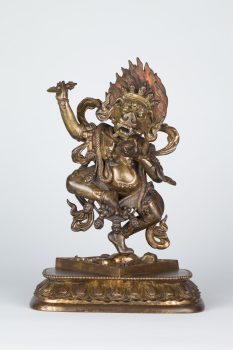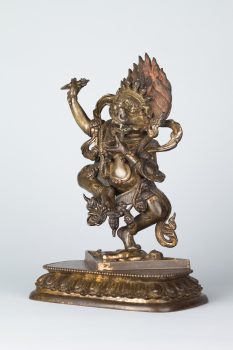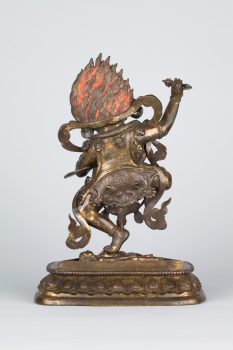Tibet
18th century




Tibet
18th century




The lion-faced female wrathful deity Simhamukha originated in northern India and became popular with the oldest Tibetan Buddhist religious tradition, known as the Nyingma. She is believed to repel all negative forces and obstacles, both outer and inner. In the Nyingma tradition she is associated with the legendary teacher Padmasambhava. She is also worshiped in other Tibetan Buddhist traditions, though in those contexts she is associated with the Tantric deity Chakrasamvara. This sculpture shows the deity adorned with skulls, snakes, and jewels; standing in an animated dancing posture; and holding a curved knife and a skullcup. These two implements are commonly used in Tibetan Buddhist ritual practices throughout the Himalayas and are also common attributes of other tantric deities.
A kind of energy that can be used, individually and collectively, to effect change.
A virtuous feeling and deep respect toward an authentic teaching, teacher, or path. Buddhists believe that expansive study, analysis, and meditation are essential steps for cultivating a healthy and enduring devotion.
Protectors of Buddhist teachings who destroy obstacles that impede the path to enlightenment. The more frightening and gruesome their appearance, the greater their power.
Today, Tibetans primarily inhabit the Tibetan Plateau, situated between the Himalayan mountain range and the Indian subcontinent to the west, Chinese cultural regions to the east, and Mongolian cultural regions to the northeast. During the 7th to 9th century, Tibetan rulers expanded their empire across Central Asia, and established Buddhism as the state religion.
Get the latest news and stories from the Rubin, plus occasional information on how to support our work.